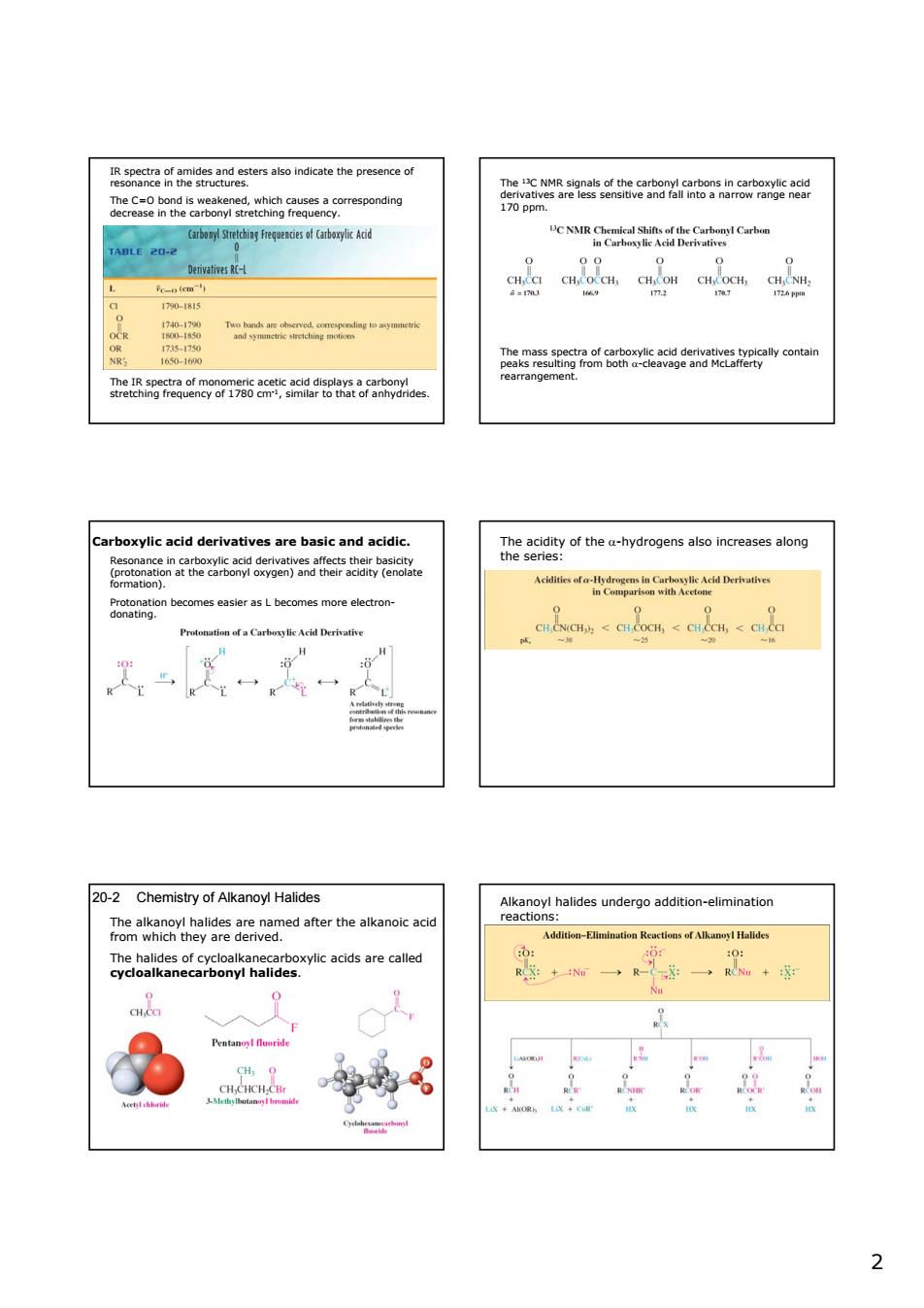正在加载图片...

docCaehearSesethl9agesn5oreondi TABLE 20-2 c Cc g2w meRgtaofnyoT86aceacaetaaatoA4e xylic acid derivatives are basic and acidic pr cna66naareat5osgr0ees5ee8yaetat of a Carbesy lie Ack相De小he 20-2 Chemistry of Alkanoyl Halides Alkanoyl halides undergo addition-elimination emalwhc8rlhgeeneaedanertheakenocacd eac Addit-Eininath Reactims ofa ylic acids are called 9 22 IR spectra of amides and esters also indicate the presence of resonance in the structures. The C=O bond is weakened, which causes a corresponding decrease in the carbonyl stretching frequency. The IR spectra of monomeric acetic acid displays a carbonyl stretching frequency of 1780 cm-1, similar to that of anhydrides. The 13C NMR signals of the carbonyl carbons in carboxylic acid derivatives are less sensitive and fall into a narrow range near 170 ppm. The mass spectra of carboxylic acid derivatives typically contain peaks resulting from both α-cleavage and McLafferty rearrangement. Carboxylic acid derivatives are basic and acidic. Resonance in carboxylic acid derivatives affects their basicity (protonation at the carbonyl oxygen) and their acidity (enolate formation). Protonation becomes easier as L becomes more electrondonating. The acidity of the α-hydrogens also increases along the series: 20-2 Chemistry of Alkanoyl Halides The alkanoyl halides are named after the alkanoic acid from which they are derived. The halides of cycloalkanecarboxylic acids are called cycloalkanecarbonyl halides. Alkanoyl halides undergo addition-elimination reactions: